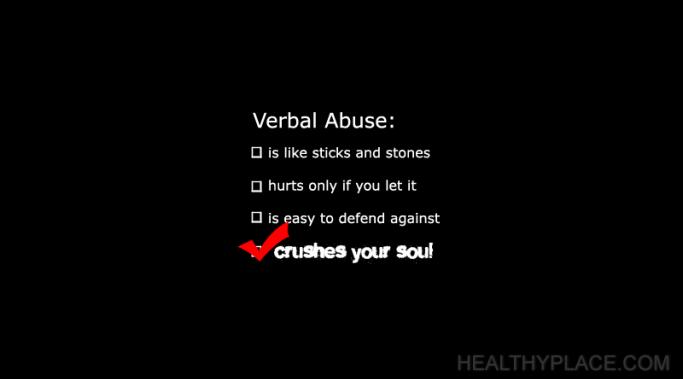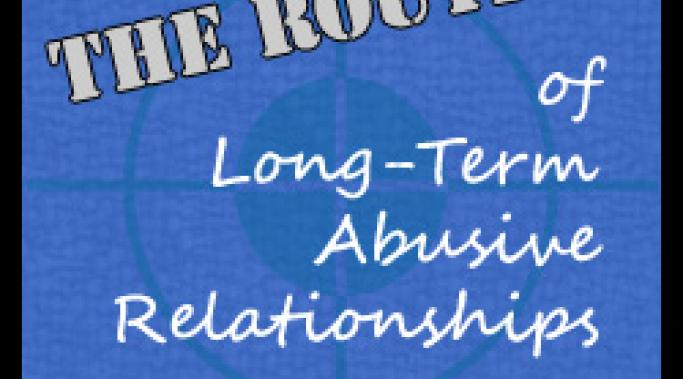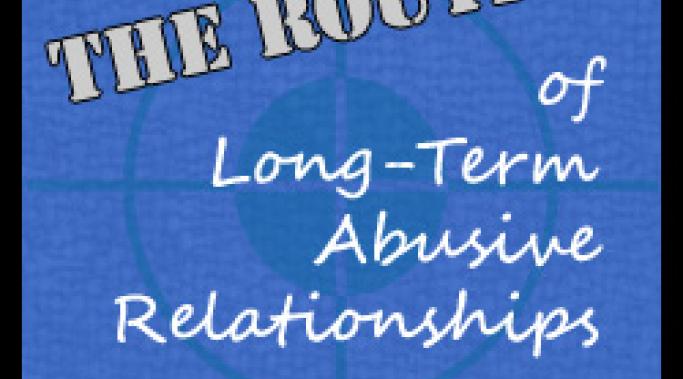The effects of verbal abuse hurt me in both the short-term and long-term. Short-term effects of verbal abuse were the sting of his words or suggestions and the long nights spent crying silently to myself, figuring out what I needed to do to make the relationship better. Long-term effects, for me, are posttraumatic stress disorder and major depressive disorder. Some victims of abuse suffer dissociative identity disorder, too.
How does that happen? Why does a healthy person become a victim suffering from mental disorders?
Verbal Abuse in Relationships
If you have read about domestic violence, then know that healing from abuse can be as difficult as living in it. You've read that leaving abusive relationships is not easy and can be downright dangerous. You read about the cycle of abuse and the power and control wheel. You've also come to understand that whether you believe you are abused or if you continue to question if your partner abuses you, your relationship is not a healthy one. Hopefully, at the very least, you realize the problem in your relationship cannot be entirely your fault (relationships take two, you know) and your mental disorders or problems like codependency explain only a fraction of the story.
The trauma triggers discussed in the last post (How To Handle Trauma Triggers Caused By Domestic Abuse) typically result in anxiety or panic attacks. You can often find a cause for those types of trauma triggers and there is a way to handle the anxiety they cause at the time they occur.
On the other hand, hidden trauma triggers are situations, relationships or events that subconsciously remind an abuse survivor of the abuse they experienced and cause the survivor to feel or act out in ways they did during the abusive relationship for several days or longer.
Many people living in abuse and people who have left their abusers experience trauma triggers related to what they saw, heard, smelled, touched or tasted during abusive attacks. The trauma triggers are different for everyone, but fortunately, we can handle trauma triggers similarly.
How do you live with abuse and learn to trust your intuition after distrusting yourself for so long? Why do you want to revive your intuition anyway? Here's the deal: your abuser wants you isolated from everyone and anything (such as your intuition) that could convince you to leave the relationship.
You've learned how to live with abuse your partner's way. It's time to live with abuse a new way.
Wondering how to end your abusive relationship? There's one way that requires no tools, no tears and no trust given to anyone but yourself. You see, trusting your intuition is like trusting that one friend who never lets you down (imagine that friend if you haven't had one since being isolated). Your intuition guides you through life safely when you develop and use it correctly.
And therein lies a problem: an abusive relationship disconnects you from your intuition. Abusers know that trusting your intuition will lead you away from their control pull, and eventually, your intuition can end your abusive relationship.
In the following video, I say to you what I needed to remember today. I am less than no one. I have value. I am chock full of potential and promise. So are you.
To help me remember I am worthy, I have to remember the vocabulary of abuse. The vocabulary of abuse is the words and techniques abusers use to keep abuse victims as victims. When I was an abuse victim, I found myself confused: I knew something was wrong, but I couldn't decipher or describe what that something could be (Gaslighting: Designed to Destroy Your Sanity). Before I knew there was a vocabulary of abuse, I was destined to remain an abuse victim .
Years ago, I bore two sons into my abusive marriage. Young and naïve, I thought my husband would change into a loving man when he felt unconditional love from and for the children. I thought that real love would end his cruelty toward me, and that he and I would create a loving family. I thought wrong.
The prior post discussed the relationship between the abuser and victim, then explored what each partner thinks during the routine. This post digs into the abusive relationship feelings and behaviors of the victim and abuser during a long-term abusive relationship.
The routine merges the cycle of violence and abuse phases of the honeymoon and tension-building, and it develops over a period of time. Typically we see the routine only in long-term abusive relationships because it enables both victim and abuser to manage their diseased relationship without expending as much emotional, mental, or physical energy as they did when the relationship was new. (The routine is also covered in this post on the routine and cycle of violence and abuse.)









